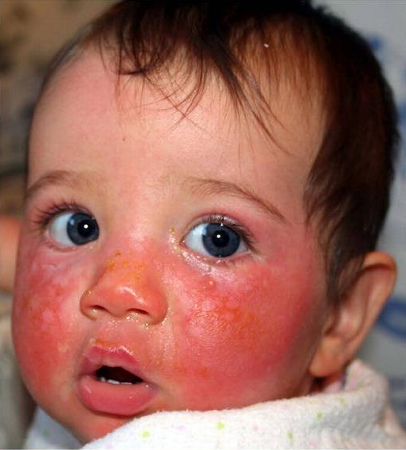Summary
Definition
History and exam
Key diagnostic factors
- presence of risk factors
- photosensitivity
- photophobia
- prominent conjunctival injection
- excessive freckle-like skin pigmentation (lentigines)
- skin xerosis
- skin atrophy
- skin wrinkling
- skin telangiectasia
- signs of skin cancer
- conjunctivitis
- corneal neovascularization
- dry eye
- keratitis/corneal scarring
- ectropion
- blepharitis
- conjunctival melanosis
- cataract
- signs of malignancy over the lids, conjunctiva, or cornea
- entropion
- diminished or absent deep tendon stretch reflex
- sensorineural deafness
- cognitive impairment
- ataxia
- acquired microcephaly
- other neurodegenerative manifestations
Diagnostic tests
Treatment algorithm
Contributors
Authors
Joseph Lam, MD
Associate Professor
Department of Pediatrics
University of British Columbia
Vancouver
Canada
Disclosures
JL declares that he has no competing interests.
Alexander Leung, MD
Professor of Pediatrics
The University of Calgary
Calgary
Alberta
Canada
Disclosures
AL declares that he has no competing interests.
Peer reviewers
Kenneth H. Kraemer, MD
Chief, DNA Repair Section
Laboratory of Cancer Biology and Genetics
Center for Cancer Research
National Cancer Institute
Bethesda
MD
Disclosures
KHK declares that he has no competing interests.
Peer reviewer acknowledgements
BMJ Best Practice topics are updated on a rolling basis in line with developments in evidence and guidance. The peer reviewers listed here have reviewed the content at least once during the history of the topic.
Disclosures
Peer reviewer affiliations and disclosures pertain to the time of the review.
References
Key articles
Moriwaki S, Kanda F, Hayashi M, et al. Xeroderma pigmentosum clinical practice guidelines. J Dermatol. 2017 Oct;44(10):1087-96.Full text Abstract
Leung AK, Barankin B, Lam JM, et al. Xeroderma pigmentosum: an updated review. Drugs Context. 2022;11:2022-2-5.Full text Abstract
Walsh MF, Chang VY, Kohlmann WK, et al. Recommendations for childhood cancer screening and surveillance in DNA repair disorders. Clin Cancer Res. 2017 Jun 1;23(11):e23-31.Full text Abstract
Reference articles
A full list of sources referenced in this topic is available here.
Use of this content is subject to our disclaimer
